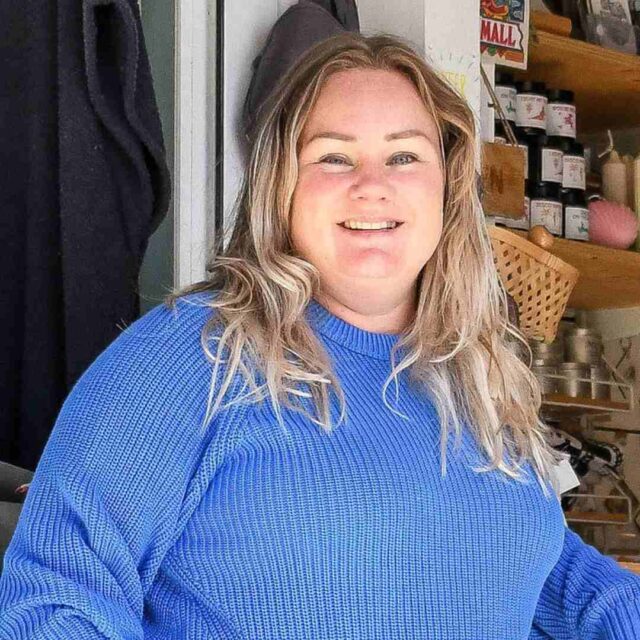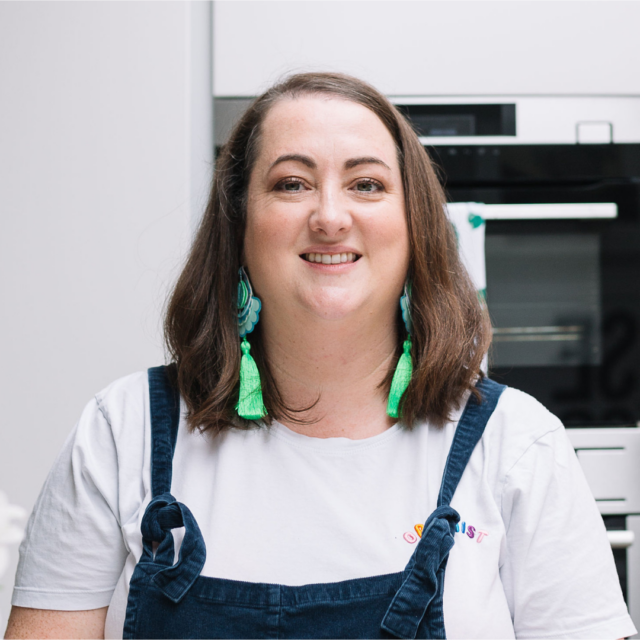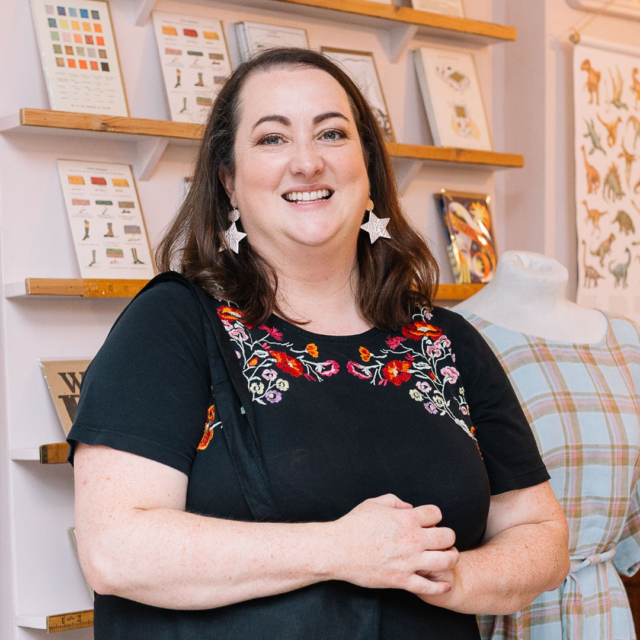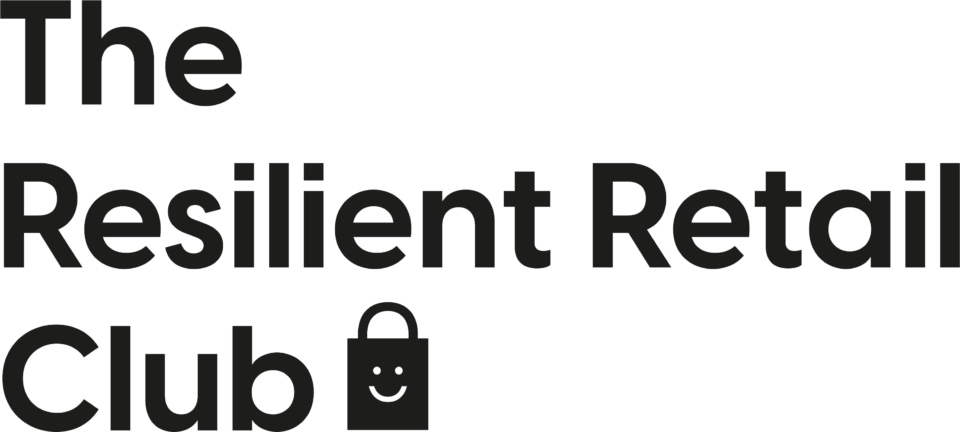2024 Christmas Unwrapped: Insights for Small Retailers
Catherine Erdly: What is ahead for Christmas 2024?
Hi, I’m Catherine Erdly. I’m your host today on the Resilient Retail Game Plan. I’m also the founder of the Resilient Retail Club. It’s my membership group and mastermind for product businesses. You can find out more at resilient retail club. com.
The fourth quarter is heading straight towards us. So what is going to happen?
So in order to put together today’s episode, I’ve looked at research from the likes of PwC, Mintel, the Retail Week Report, NatWest and others to look at what the forecast outlook is for Christmas shopping this year.
Whenever I put together these type of podcasts, we always have to take it with a grain of salt, but it is useful to understand what people are seeing as the big macroeconomic picture as we head towards the fourth quarter and what that can mean for you specifically as an independent retailer, boutique or e commerce business.
We are going to be running through what the key economic outlook is what the trends are in Christmas shopping We’re going to talk specifically about small business focus and we’re going to talk about consumer spending behavior predictions as well as predictions by sector and then going to wrap it all up with what’s ahead for 2024 Christmas.
Welcome to the Resilient Retail Game Plan, a podcast for anyone wanting to start, grow or scale a profitable creative product business with me, Catherine Erdly. The Resilient Retail Game Plan is a podcast dedicated to one thing, breaking down the concepts and tools that I’ve gathered from 20 years in the retail industry and showing you how you can use them in your business.
This is the real nuts and bolts of running a successful product business, broken down in an easy, accessible way. This is not a podcast about learning how to make your business look good. It’s the tools and techniques that will make you and your business feel good. Confidently plan, launch, and manage your products, and feel in control of your sales numbers and cash flow to help you build a resilient retail business.
Economic Outlook for Christmas 2024
Catherine Erdly: The economic outlook, according to PWCs retail outlook for 2024, the second half of the year is expected to show a stronger economic performance. We’re expecting to see consumer confidence improving as inflation continues to drop and interest rates are stabilizing. So PWC mentions things like falling inflation, potential drop in interest rates, improving wage growth as reasons to be cheerful.
However, there is a little bit of a bump that’s affecting us particularly at the moment. We have got the first Labour government autumn budget is coming on the 30th of October. Keir Starmer, the Prime Minister, has famously said that this could be painful. And a lot of people are wondering what exactly that does mean.
So according to the GfK’s Consumer Confidence Index, recently political and budget decisions could have an impact on the spending recovery. So there is definitely uncertainty out there. And as I’ve said many times before, and as I think it’s always worth remembering, is that uncertainty and spending are not, they’re not Easy bedfellows.
So generally speaking, when the customer is feeling uncertain, they tend to spend less as they’re kind of holding onto their money to see what happens. So I do think that is going to have an impact that people are in the watching and waiting stage at the moment to see what’s going to come out of the budget.
Richard Lim, who is a retail economist for retail week, he says, cautious optimism represents our choice of words for now. And I think that that is a really great way of putting it. So overall the big picture is from an economic perspective, we are hoping for a stronger end of the year, but right now the consumer is feeling unnerved, a little unsure as to what’s happened. So all eyes on the 30th of October for the budget and see what comes out of that.
Christmas Spending Predictions
Catherine Erdly: What about Christmas spending itself? So according to Mintel, they put out the UK Christmas gift market report. They’re expecting to see gift spending stabilizing 2024 after cuts in previous years due to the cost of living crisis.
What Mintel say in their christmas gift buying report for 2024 says value will remain a critical factor So just like we’ve seen before people even though they maybe are stabilizing or slightly increasing their spending They still want value since we’re seeing a resurgence of interest in unique gifts and extended returns policies.
This is an interesting one. So they want to be doubly sure that that they can change the gift if necessary.
Retail week continues to predict that consumers are going to start their Christmas shopping earlier. So they’re saying people buying early. We have seen this in previous years where people are trying to spread the cost of Christmas.
That’d be interesting to see what comes out of this.
But they especially see that Black Friday and the promotional period in the month of November is going to pull Christmas spending forward out of December. And we’ve certainly seen this in previous years that whereas December for years and years and years was traditionally the biggest month of the year, we’re actually seeing for some businesses November becoming the biggest month because of all of the promotional activity, which as a small business owner you may or may not want to be taking part in.
They also noted that young consumers, so the 18 to 34 age range are going to be driving a large portion of early spending. So parents and younger generations are the most likely to take advantage of Black Friday sales with 82% of 18 to 24s, planning to spend a quarter of their budget during this time, which is the IPA annual survey, institute of practitioners in advertising.
The prediction is also that e commerce is going to continue to play a really important part during Christmas. So we’ve actually seen slowdowns in the percentage of sales that are taking place online over the last couple of years. It peaked during the pandemic, got all the way up over well over a third.
And it has since the pandemic been declining, generally speaking. But with all of that said. We always see an uptick every year at this time for the percentage of money that is spent online. So online is still going to be super important for that fourth quarter.
So they’re saying particularly according to the retail and leisure outlook report from netwest They’re saying that online sales remain a key driver for christmas, especially in categories like toys, Health and beauty, and electronics.
And the IMRG forecast from retail week says that online now accounts for over a quarter of all retail sales and brands like Amazon saw an uptick in sales in the festive season. So we know that Amazon’s going to be going big on online at Christmas. We know that online for other businesses is going to be important too.
And we know that the customer is definitely going to be quite active in that November time period, that promotional time period.
Omnichannel Strategies for Small Businesses
Catherine Erdly: what do we need to be focused on as small business owners?
Really interestingly, what came out in quite a few of the reports was this notion of being Omnichannel. So Omnichannel is effectively where you’re pulling together your multiple different revenue streams, whether that’s online, offline, or your different platforms online.
And we’re seeing a customer that even more than ever before wants to shop seamlessly between the different channels. So for example, the net West report with the retail outlook for 2024, they really mentioned small businesses in particular and talk about, you know, you’ve got to be able to integrate your online and offline sales.
So what does that even mean? That means consistency between your sales channels. So part of that is what’s visible. If you’ve got a store and a website, for example, what’s visible in your store should be reflected on your website and vice versa. You don’t want to go to a store and see completely different products being featured at the front than you would see on your homepage, for example, the two can be closely linked together.
We also know that customers, Love the convenience of things like buy online, collect in store or also known as click and collect. And also people like to have the option, for example, people at shows, even if you don’t have a bricks and mortar store, if you have, for example, a standard show, then it’s brilliant if you can offer them delivery.
So can you offer free deliveries? For example, so people don’t have to carry your products around with them. So thinking about the ways that you can get people to move in between your online and offline presence is also really, really key as well. We know that people who shop with you both online and offline are often much better customers.
So encourage people to shop online. If they come into your store, can you give them a reason to go online and buy, or if they come and see you at a fair, can you give them a reason to come and purchase from you online? Can you get their email address if you see them in person? I think that is really, really critical to make the link between a physical presence and online.
Make sure that you can link them together. That could be through something as simple as having a QR code and reminding people to use it. You could incentivize that with offers, with prizes, with prize draws that kind of thing to get people to move between your physical presence and your online presence Also be thinking about things like how can you signpost your online presence in your physical space?
Can you put it on till receipts on bags on flyers in the store? Can you be really encouraging people to buy from you. And the equally vice versa. If someone’s buying from you online, can you be encouraging them to come into store, give them a reason to come visit you to see you in person and to really just encourage that cross directional traffic.
So the PWC report says winning formulas in 2024 will combine value, brand relevance, and a solid omni channel approach. So lots of reports spoke about the importance of something that we’ve talked about for years and years, but the importance of having that online and offline presence that actually works together. And I think really importantly feels consistent because that really helps build trust.
So another element that came up a lot in a lot of the reports that can be very useful for small businesses is brand loyalty. So consumers are seeking more personalized shopping experiences and loyalty programs are playing a bigger role since the retail week Christmas forecast.
So they talked about programs like Tesco’s Clubcard and Sainsbury’s Nectar to talk about the importance of loyalty. And obviously we know that these are massive, massive, that are huge for these big giant retailers, but there’s nothing to stop you as a small business, having a simple loyalty or referral program during Christmas that will help you stand out.
And at the very, very least, even if you don’t have any kind of loyalty program set up, I would highly, highly recommend that you are coming up with a strategy of engaging your best customers during the holiday time period, because they are always your best bet. Anytime, a day, anytime of the year, your best bet are going to be your best customers, but make sure that you’re reaching out to them for sure at Christmas.
And then sustainability and ethical shopping.
So the Mintel 2024 report says that there’s growing consumer demand for brands that demonstrate sustainability and ethical practices. This has been on the radar for years and years and years. And I think it’s still important as small business owners to keep talking about transparency and commitment to sustainable practices, which will help engage customers. People want to know that they’re buying good things that will do good things when they’re purchasing the gifts for loved ones.
Consumer Spending Behavior and Value
Catherine Erdly: So next I’m going to talk a little bit about navigating the consumer spending behavior. So price sensitivity and deals. This is definitely the something that cropped up a few times in reports and I think that this is a really difficult line for a lot of small business owners to walk because I definitely don’t think that small business owners are really in a position to compete on price, if I’m totally honest.
If you try and be the cheapest, the best value, the difference between cheap and value, which I’d like to come on to in a little bit, but I think that you can’t be the cheapest, but you can be good value. So value often is about, really communicating to your customer the quality of what you do, the quality of how something is made and also talking about things like longevity, cost per use, how long something’s going to last, how good it’s going to look, how good it’s going to stay looking because it’s made from higher quality materials.
And I think that that is really, really important. We’re going to be focused on value. That doesn’t mean the same as something being cheap, but I do think it’s important to remember that today’s customer maybe has slightly looser purse strings than say 2023, but it’s doesn’t mean that they’re going to be just out there splashing the cash.
If you are going to be doing promotions, then remember that they look like they’re for the customer that actually for you, make sure that you are using them to really shape the customer behavior.
And also think about the concept of little luxuries. So the PWC report talks about how shoppers are treating themselves more, even during economic uncertainty with indulgent spending on smaller luxury items, this came out actually in retail week, as well as, the PwC report.
So this is really about thinking about how you can convey this idea of little luxuries. So you can have a luxury item at any price point. You could have, for example, a five pound luxury chocolate bar. That could be something somebody could buy into as a lovely special treat, but it’s just a lower price point.
You can have luxury at any price level, you know, 25 pounds is a, is a common gifting price point. And that would be a luxury notebook, for example. So. I think when we’re thinking about prices It can be frankly a bit depressing because we think oh the customer just wants the cheapest price I don’t think at christmas they always want the cheapest price, I think that they are getting something that is really good value. So make sure that you’re really talking about the quality, about the great benefits of your products, about how it’s made, the materials that it’s made from, and how it’s a great gift.
And then also think about this idea of little luxuries. What do you have in your range that could be really a lovely gift for somebody, something really special, but doesn’t have to break the bank? I do think that that 25 to 30 pound price point will still remain a really important key Christmas gift giving price point.
Despite inflation, it might make it trickier to have some things in that 25 to 30. But I still think where we’ve had inflation for a couple of years now, I still think that that’s an important price point psychologically for the customer. I think our psychology changes a little bit slower than the prices.
Sector-Specific Predictions
Catherine Erdly: If you look at the predictions by sector, then as we might expect at Christmas, food and drink is expected to be a leading category for growth at Christmas, not entirely surprisingly. So consumers continue to prioritize food for gatherings and festive meals with grocery retailers like M& S focusing on premium products that’s coming from retail week.
And then also the KPMG outlook for Christmas Picked up on this as well. Health and beauty. This has been the top trending area for a long time now. So consumers will spend more on health and beauty with a focus on self care and gifting according to the retail week forecast.
And then toys. The toy market is expected to grow by 2.1% driven by both kid and adult purchases. That’s from retail economics.
And that’s really interesting here because I think I posted a reel earlier this year about my visit to the jelly cat pop up inside Selfridges, which is a soft toy pop up where they were pretending it was a fish and chips shop, and they were pretending to serve fish and chips, which was really these soft toys.
It’s really funny because, they were mostly adults buying, and I have read that the adult soft toy market has really grown as we kind of crave that nostalgia. And, That’s that more fun element to gift giving. So that’s an interesting one there. So toys driven by both kid and adult purchases.
Now 2. 1 percent growth, but that’s definitely one of the areas that got highlighted.
Now one of the areas that is being highlighted as being tricky is electronics. So this is always typically driven a lot by the demand and black Friday. However, They’re expecting it to face slower growth compared to previous years.
And that’s mostly to do with fewer major product launches according to retail weeks. So electronics is the one that they think looks the most wobbly, but then food and drink health and beauty and toys as growth areas.
What I Believe Christmas 2024 Will Hold
Catherine Erdly: So what to make from all of this? Well, 2024 as pretty much any year holds opportunities as well as challenges.
But I do think that if we can remember that the customer, is slightly more optimistic than previously, but they’re still thinking about value. Thinking about loyalty and also thinking about the person who’s out there shopping early. I think then that will set you up for success.
There’s a lot of chat about AI. It’s interesting. I don’t know how much that’s really going to impact the small business world. I do think the customer does want to see those personalized recommendations, personalized communication, which, you know, small business owners can do better than big businesses because they can actually give real personalized responses as opposed to AI personalized responses, but just want to think about that be interesting to see from the big guys, how they’re going to be utilizing AI more in their marketing and their approach to customers.
So cautiously optimistic. I think that’s kind of my watchword for this year. I feel like last year. I was less optimistic. I really thought that it was going to be a tricky Christmas. At the end of the day, it was a little bit trickier. You know, whenever we talk about it being tricky, it’s never like people just don’t buy Christmas presents.
And it’s not even like you see these big double digit dips, but it was definitely not like a bumper Christmas in 2023. I do think that overall the customer is slightly more optimistic now, but I do think that we may see some of this early behavior slightly delayed by the budget coming up on the 30th of October.
So I wouldn’t be surprised if we see a bit of a flurry in November, in terms of people kind of snapping into that. Okay, right. Let’s get ready for Christmas. But equally, I’m sure we’re going to have the usual circus of Black Friday and all of the discounting noise. I don’t think it’s really going to be any different from previous years.
If anything, I think we might even see slightly less of this kind of behavior because a lot of big businesses have recognized that it just trashes their margin unless they’re in a position where they can have deliberately bought products to sell at these black Friday prices. But I think customers are getting more and more wise to that kind of behavior as well.
So be interesting to see how much they really go for that. And I think also on that note, I do think that , more than ever, the ability to actually just talk to customers and be really transparent and open with them about what your plans are for the promotional time period. And to make a decision for you as a business owner.
Do you want to take part in these kinds of promotions? Do you not want to? I think any approach is applicable. It’s up to you. You make the decision. It’s your business and do what works for you. I think that, we are seeing people planning on buying earlier. Yeah. We see this every year. I think people will be looking out for value above anything else, but I don’t think that it means that you’re going to have to go out there and slash your prices just in order to compete.
I think the key thing is to really stand behind your product, to really sell it to your customer, to have belief in it and go from there.
So let’s see what Christmas 2024 has in store.
Thank you so much for listening. If you have a moment to rate and review the podcast, it makes a huge difference getting it out there in front of other people. And why not pop over to Instagram at Resilient Retail Club, let me know what you took away from today’s episode.






